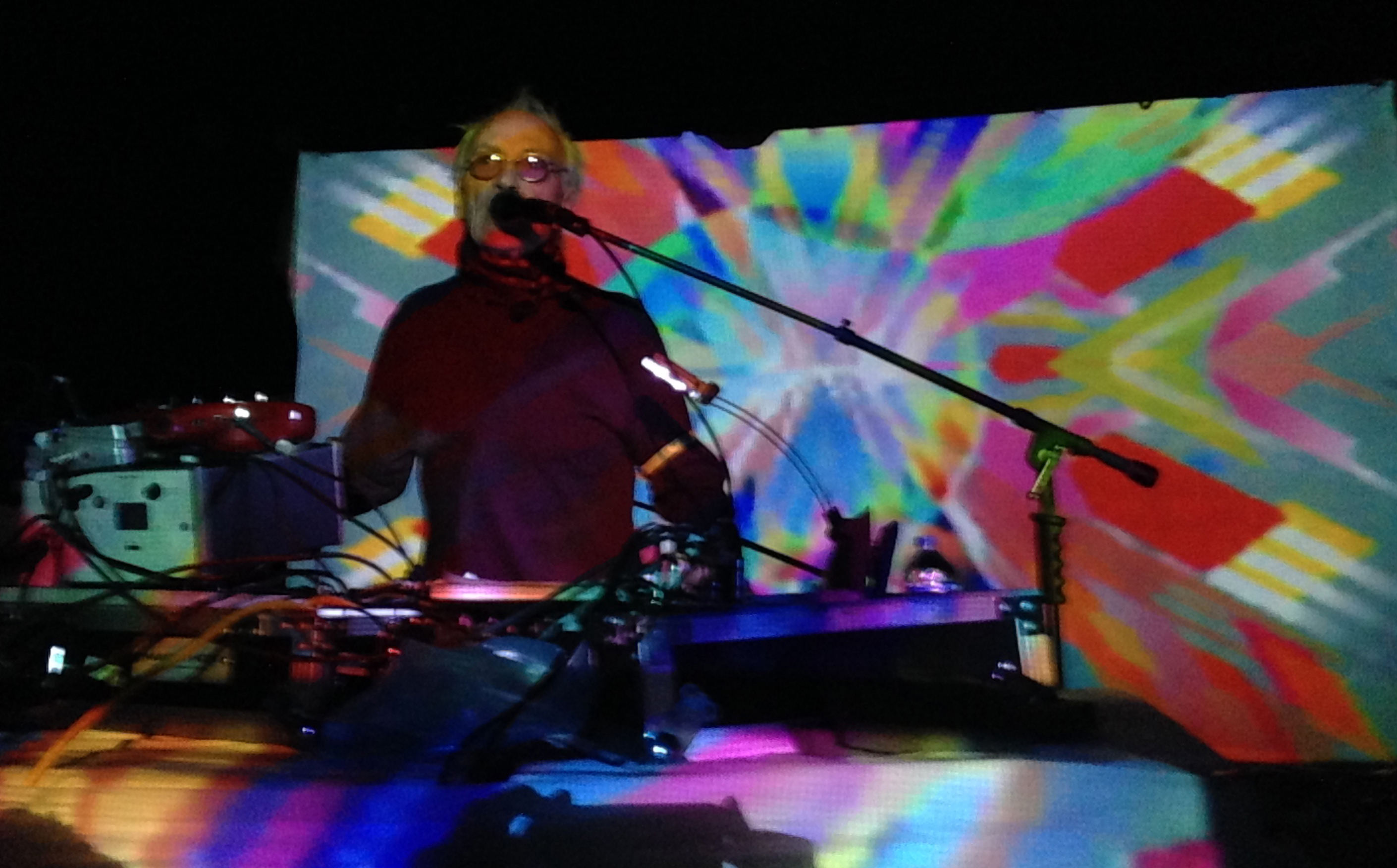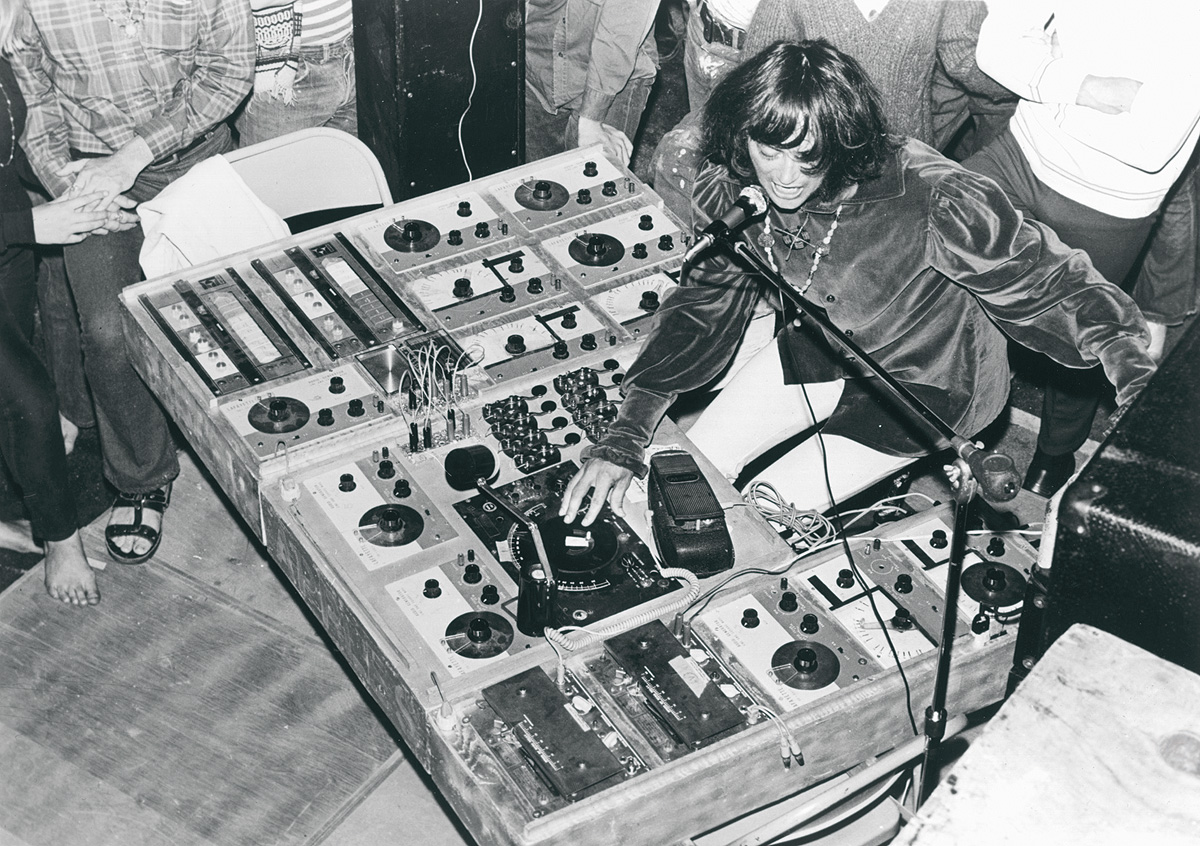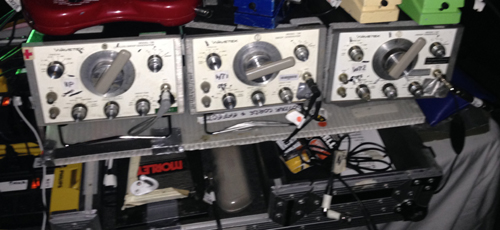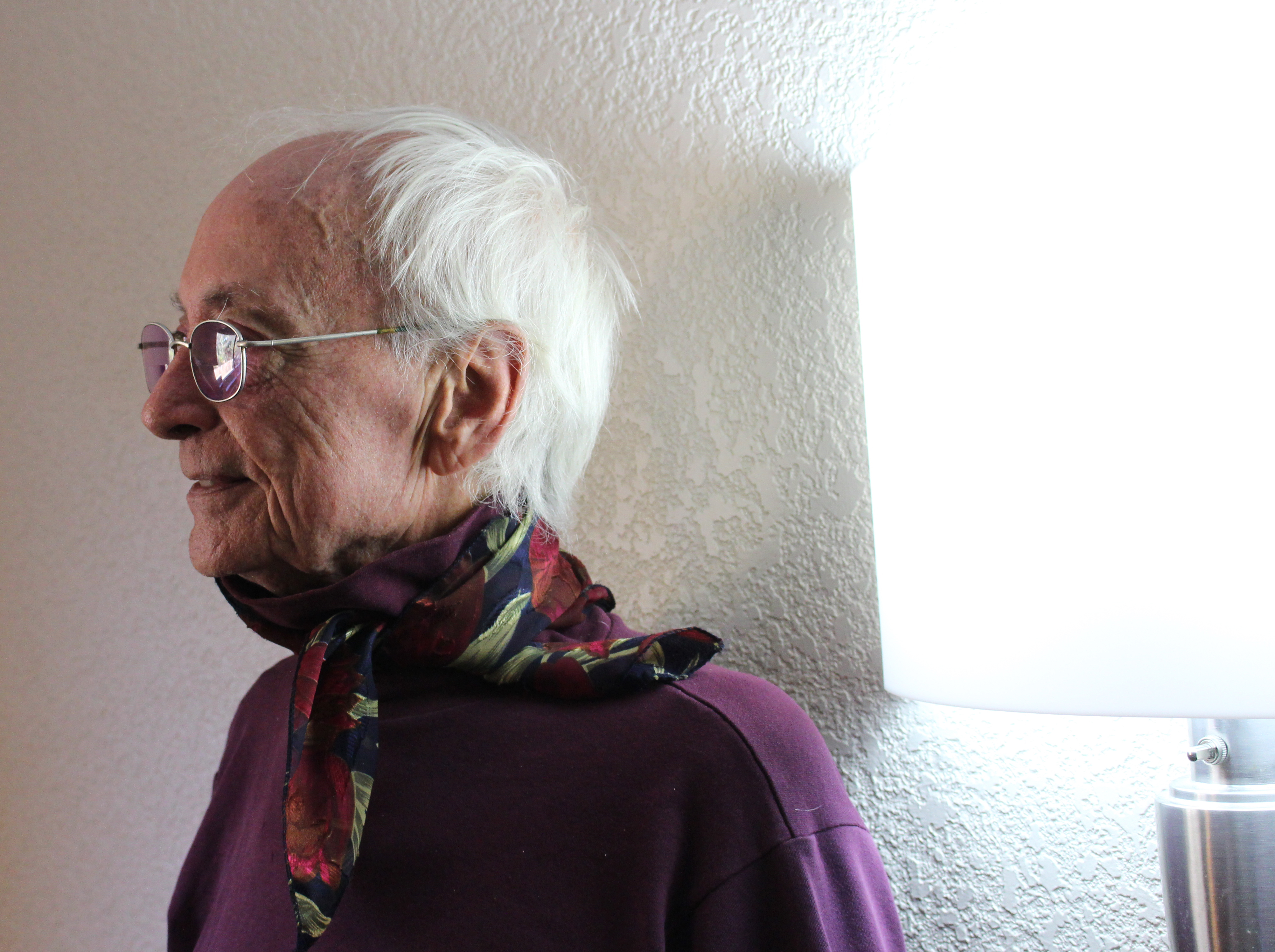Hear the story of the first Electro-pop group, Silver Apples in Echoes Podcast
Often when we produce interview features on Echoes, a lot of great material gets left on the floor due time constraints or because they are extraneous to the central story. That’s the case with our interview with Simeon Coxe of Silver Apples. You can hear all about this pioneering electronic pop group on Echoes, but in brief, Silver Apples formed in 1967 and released their eponymous debut in 1968. They had no synthesizers or electronic keyboards, just Danny Taylor on drums and Simeon on audio oscillators controlled by telegraph switches, buttons and knobs. They were right in the center of the psychedelic 60s, opening for many of the major acts at the time and jamming with Jimi Hendrix. Many of Simeon’s stories were too long to make the feature or didn’t fit the narrative. But I want to share them with you here. You can hear the tale of Silver Apples in the Echoes Podcast
Their iconic album cover was actually designed by the band:
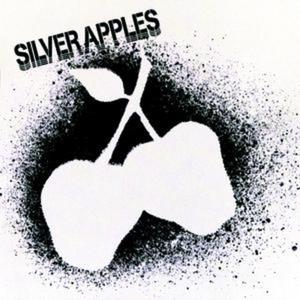 Simeon Coxe: Yeah, we cut out a silhouette of two apples, me and Danny, and a leaf, just figured, I don’t know, apples have leaves. And made a stencil out of it and sprayed our entire hallways with it with black ink and a toothbrush. And the record label came in and photographed that and chose one of them for the record.
Simeon Coxe: Yeah, we cut out a silhouette of two apples, me and Danny, and a leaf, just figured, I don’t know, apples have leaves. And made a stencil out of it and sprayed our entire hallways with it with black ink and a toothbrush. And the record label came in and photographed that and chose one of them for the record.
Simeon says that the band broke up after they were sued by Pan American Airlines over the cover of their second album, Contact:
Simeon Coxe: Our second record was called Contact. I named it Contact just because of the double entendre in the word. And the fact that old timey airplane pilots used to have someone actually crank their propellers to start the airplanes and they would yell contact, which is to make electric contact. And we thought this electric contact and the spinning of the propeller and all that was fine. So we wanted to do it in an airplane cockpit, and the advertising agency that had Kapp Records also had Pan Am, so it was easy for them to get them to park an airplane facing the sunset, and have us sit in the pilot’s seat while they vacuumed out the rest of the airplane and shoot that shot. So naturally, Danny and I smuggled in some pills and pot, you know, joints to hang out on the dashboard, stuff like that. And then to take it even further, we found a cover of an airplane crash on the back that we used on the back and super imposed me and Danny just sitting among the wreckage there, just you know, dumb hippies.
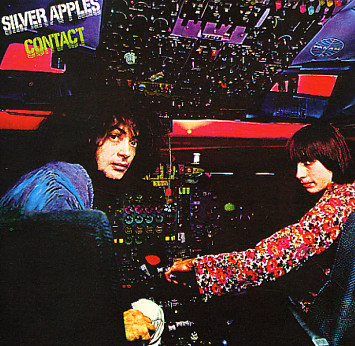 And…everybody approved it. I mean you don’t put an album out internationally and not have it go through all the steps of being approved. And it was approved by Pan Am, approved by the record label, approved by the advertising agency. And by the time it got on the shelves, some executive at Pan Am who hadn’t signed on an approval but who had had power, just freaked out and just you know, hit the fan. They, Pan Am sued us personally, sued the record label, got an injunction from a judge to have all the records pulled off of the shelves nationally. Got us forbidden to play the music that’s on that record, so we couldn’t promote it. And as a matter of fact, they went so far as to in the city of New York, get the judge to allow them to confiscate our equipment to make sure we weren’t gonna play that music. So one time when we were playing at Max’s Kansas City, fire marshals came in and taped the stage so that our stuff would be there when their equipment guy got there, and we managed when they weren’t looking, we managed to sneak my oscillators and stuff out the back door, but by the time we got back, they got Danny’s drums. So we were out of business. No record, no record label and no equipment.
And…everybody approved it. I mean you don’t put an album out internationally and not have it go through all the steps of being approved. And it was approved by Pan Am, approved by the record label, approved by the advertising agency. And by the time it got on the shelves, some executive at Pan Am who hadn’t signed on an approval but who had had power, just freaked out and just you know, hit the fan. They, Pan Am sued us personally, sued the record label, got an injunction from a judge to have all the records pulled off of the shelves nationally. Got us forbidden to play the music that’s on that record, so we couldn’t promote it. And as a matter of fact, they went so far as to in the city of New York, get the judge to allow them to confiscate our equipment to make sure we weren’t gonna play that music. So one time when we were playing at Max’s Kansas City, fire marshals came in and taped the stage so that our stuff would be there when their equipment guy got there, and we managed when they weren’t looking, we managed to sneak my oscillators and stuff out the back door, but by the time we got back, they got Danny’s drums. So we were out of business. No record, no record label and no equipment.
They didn’t collect from me. Danny and I went into hiding. We both got hotel rooms and just kinda went into hiding. I worked as a DJ in a nightclub for a while and I think Danny did some session work in recording studios under a different name, and we just kinda laid low. Then eventually we just said, you know, Silver Apples is never coming back, it’s just not going to be possible, we better just go our own ways for a while and see what happens.
So Pan Am, I guess you could say they successfully shut us down, but actually Silver Apples is still in business. I don’t think you’ll find a PanAm airplane anyway, so we survived, from my point of view.
Simeon says that Silver Apples jammed with Jimi Hendrix and actually recorded a version of “The Star Spangled Banner” with him.
Simeon Coxe: Yeah, well he and Danny were friends. Danny played drums in his first band. His first band was something called Jimi James and the Blue Flames. And they worked as a house band all through the village, just a straight blues band. And the drummer was apparently very unreliable; he’d get drunk and get lost or something. He wouldn’t show up for days, sometimes weeks. One time he went to detox and just stayed there for months. And Jimi would call Danny and Danny would come drum with him. And so when Hendrix got the opportunity to go to England and try and make something bigger for himself because he didn’t feel like it was happening in the states, but a bunch of the British musicians were saying we could make it happen, he begged Danny to come with him. He didn’t wanna go by himself and just be there with, you know, have to pick up musicians. He ended up with a pretty good group, but fortunately, Danny didn’t wanna go to Britain. He just didn’t want to go and he said you know, there’s plenty of musicians around here I can work with. And so I got him.
And so whenever Hendrix would come back into town, he’d look Danny up and see what he was doing, and so he came around the record plant. We both were booked in the record plant simultaneously one time for months for doing our third records. And so he’d come in and jam and we’d find, we’d find out what he was doing in his studio and jam. A lot of times we were using the same studio, his amps would be parked all around my amps. And so we’d just, you know, when the time came, I’d leave and he’d come in, or many times it would overlap. He would come in and sit around and drink a beer while Danny and I were working on stuff. One time Danny and I were working on our version of “The Star Spangled Banner,” which we were gonna do at a festival in, on the 4th of July in the park in NY. We were gonna play “The Star Spangled Banner” with my oscillators. We thought that would be a howl; if the CIA didn’t put us in jail, it would be great. And Hendrix came in and he heard us playing it. And he said damn, I’m working on the same thing…I’m supposed to play an outdoor concert in a couple of months and I’m supposed to play at dawn, and I thought it would be funny to play the national anthem to make those kids all stand up and wake up, you know, before, at the crack of dawn. [He was actually scheduled to play at night and close the festival, but rain delays pushed him into the morning.]
And so we got to talking about it and he was listening to how we were doing it, and he was playing along with how he was doing it. And Ed Kramer, who’s the engineer, had the good sense to roll the tapes. And so we do have that. We the version that was given to Danny, a two track mix down that was given to Danny to take home to see how he could add drums to it…all kinds of cymbal crashes for the war sounds and stuff. And it just never happened, but we did find the tape of me on bass oscillators and Hendrix on guitar playing “The Star Spangled Banner. ” We found it in Danny’s attic when Danny and I hooked up again in the ‘90s. And so that’s been since released on a disk called Selections, which is like a best of. It has about 12 cuts from the first two albums and then as a bonus track, as a hidden track it’s the Hendrix session.
This video is ostensibly that recording, however, to my ears it sounds like the studio version from Hendrix’s Rainbow Bridge.
Finally, Simeon claims he never called his instrument The Simeon.
Simeon Coxe: Well, The Simeon, but I would never have done that. That’s embarrassing to me to this day. That was one of those record label things to try and promote something that really didn’t exist. There was nothing that was The Simeon. It changed every day. Something broke and had to be replaced every day, or Danny or I would have a new idea, something that we added or subtracted to it. It never was the same. There was no way it could ever be manufactured or marketed in any way, but they had to do that as I was just kinda stuck with it.
I told him he should own it.
This is the stuff that was left out. Hear what was left in with Silver Apples in the Echoes Podcast.
John Diliberto (((echoes)))
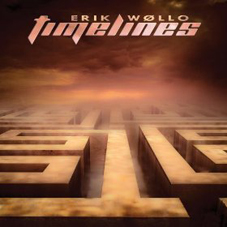 Join the Echoes CD of the Month Club. Erik Wøllo’s Timelines is our February CD of the Month. You’ll get great CDs and help support Echoes at the same time. You can do it all right here.
Join the Echoes CD of the Month Club. Erik Wøllo’s Timelines is our February CD of the Month. You’ll get great CDs and help support Echoes at the same time. You can do it all right here.
OR
Pick Up TRANSMISSIONS:
THE ECHOES LIVING ROOM CONCERTS VOLUME 19
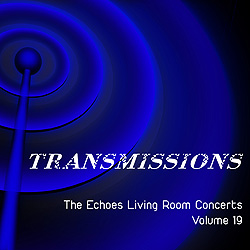 Join us on Facebook where you’ll get all the Echoes news so you won’t be left behind when Dead Can Dance appear on the show, Tangerine Dream tours or Brian Eno drops a new iPad album. Or Follow us on Twitter@echoesradio.
Join us on Facebook where you’ll get all the Echoes news so you won’t be left behind when Dead Can Dance appear on the show, Tangerine Dream tours or Brian Eno drops a new iPad album. Or Follow us on Twitter@echoesradio.
Now you can go Mobile with Echoes On-Line. Find out how you can listen to Echoes 24/7 wherever you are on your iPhone, iPad or Droid.

